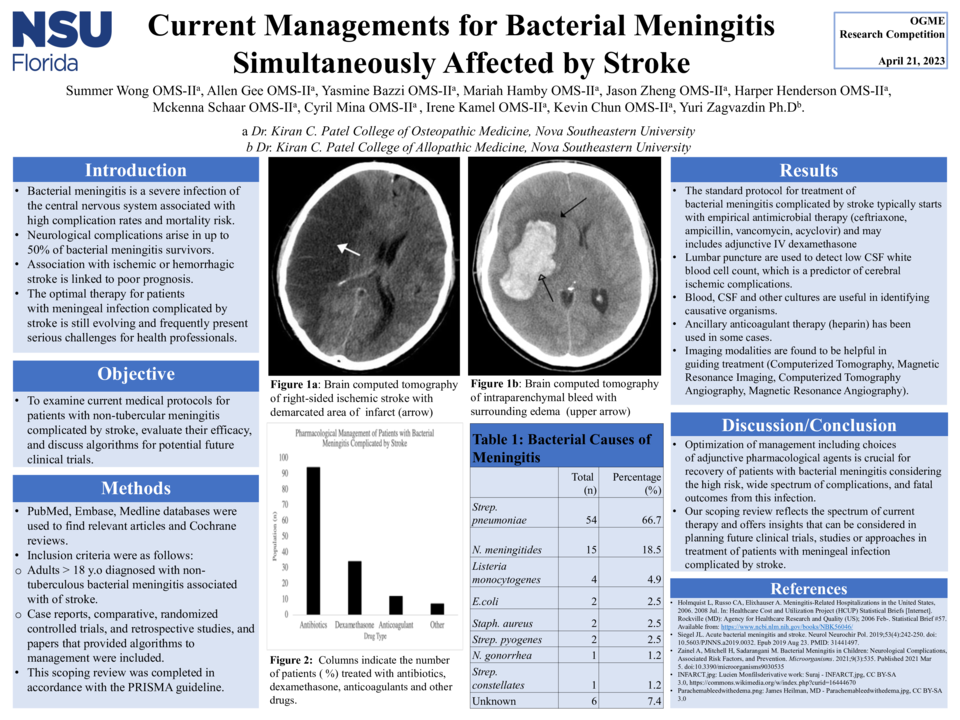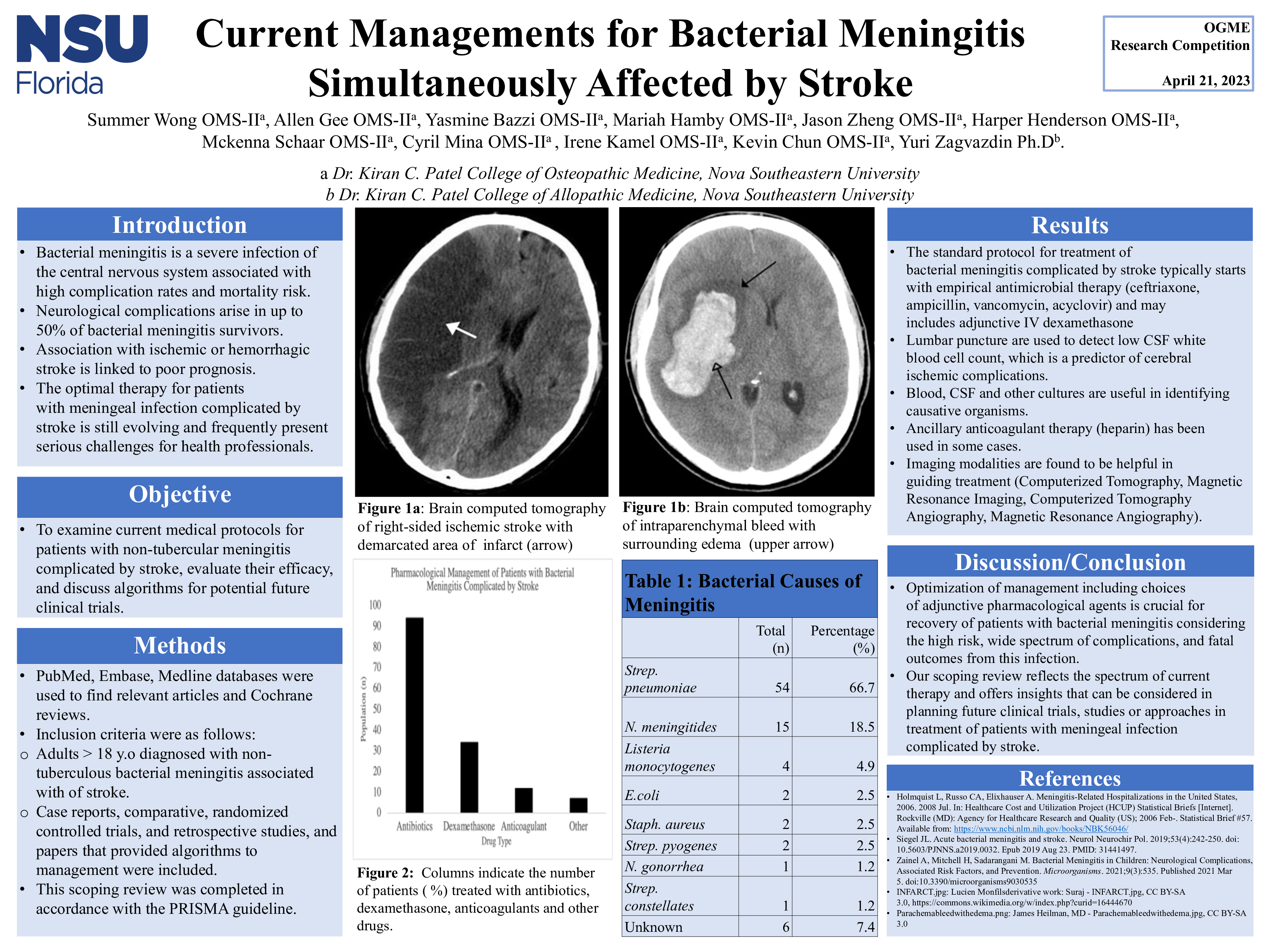Current Patient Managements for Bacterial Meningitis Simultaneously Affected by Stroke
Dermatology, Nova Southeastern University Dr. Kiran C. Patel College of Osteopathic Medicine, Fort Lauderdale, USA
Summer Wong, Allen Gee, Medical StudentDr. Kiran C. Patel College of Osteopathic Medicine, Nova Southeastern University, Fort Lauderdale , USA
Allen Gee, Yasmine BazziDr. Kiran C. Patel College of Osteopathic Medicine, Nova Southeastern University, Fort Lauderdale, USA
Yasmine Bazzi, Mariah Hamby, Medical StudentDr. Kiran C. Patel College of Osteopathic Medicine, Nova Southeastern University, Fort Lauderdale , USA
Mariah Hamby, Jason ZhengDr. Kiran C. Patel College of Osteopathic Medicine, Nova Southeastern University, Fort Lauderdale , USA
Jason Zheng, Harper Henderson, Medical StudentDr. Kiran C. Patel College of Osteopathic Medicine, Nova Southeastern University, Fort Lauderdale , USA
Harper Henderson, McKenna Schaar, Medical StudentDr. Kiran C. Patel College of Osteopathic Medicine, Nova Southeastern University, Fort Lauderdale , USA
McKenna Schaar, Cyril Mina, Medical StudentDr. Kiran C. Patel College of Osteopathic Medicine, Nova Southeastern University, Fort Lauderdale , USA
Cyril Mina, Irene Kamel, Medical StudentDr. Kiran C. Patel College of Osteopathic Medicine, Nova Southeastern University, Fort Lauderdale, USA
Irene Kamel, Kevin ChunDr. Kiran C. Patel College of Osteopathic Medicine, Nova Southeastern University, Fort Lauderdale , USA
Kevin Chun, Yuri Zagvazdin, PhDDepartment of Medical Education, Nova Southeastern University Dr. Kiran C. Patel College of Allopathic Medicine, Fort Lauderdale, USA
Yuri Zagvazdin




